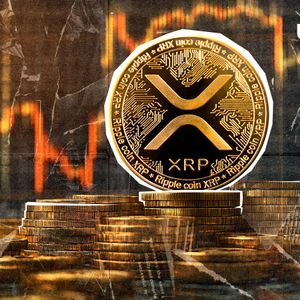Should I Invest in ETFs?
4 min read
In recent years, exchange-traded funds, or ETFs, have become one of the most talked-about investment tools. With more people seeking flexible, low-cost ways to grow their money, ETFs are often one of the first options introduced in online trading courses and beginner-friendly financial platforms. Their popularity isn’t just hype. ETFs provide a mix of accessibility, diversification, and cost-efficiency that appeals to a wide range of investors. Before jumping in, it’s worth understanding how ETFs work and whether they actually match your financial goals. What Is an ETF? An ETF, or exchange-traded fund, is a type of investment fund that holds a collection of assets and trades on stock exchanges, just like individual stocks. When you buy a share of an ETF, you’re essentially buying a small piece of every asset in that fund. Many ETFs are designed to track specific indexes, such as the S&P 500 or the NASDAQ-100. Others focus on particular sectors, countries, or investment themes. What makes ETFs unique is their flexibility — they can be bought or sold at market price throughout the trading day, unlike mutual funds, which only trade at the end of the day. What Are the Key Benefits of Investing in ETFs? ETFs come with several advantages. First, they offer built-in diversification. Instead of buying individual stocks one by one, investors gain exposure to many assets simultaneously, reducing risk across their portfolios. They also tend to have lower fees than mutual funds, especially those that are passively managed. This cost-efficiency can lead to improved long-term performance, especially for hands-off investors. ETFs are also highly liquid, meaning they can be bought or sold quickly during market hours. Finally, their structure makes them relatively tax-efficient. Thanks to how ETFs are created and redeemed, many investors can benefit from fewer capital gains distributions than traditional funds. What Are the Potential Drawbacks of ETFs? While ETFs boast a range of benefits, they’re not without downsides. For one, market risk still applies. If the overall market or the sector an ETF tracks goes down, the value of the ETF will likely follow. Diversification can help reduce risk, but it doesn’t eliminate it. Some investors may also over-diversify by holding too many ETFs, which can dilute potential gains and make portfolios harder to manage. Leveraged or inverse ETFs are another risk — these are designed for short-term trading and can carry significantly higher volatility and complexity. Lastly, certain niche ETFs may have low trading volumes, which can affect price accuracy and liquidity when trying to buy or sell shares. What Are the Most Common Types of ETFs? There’s no one-size-fits-all ETF, since different types serve different goals. For example, index ETFs, like those tracking the S&P 500, are popular for broad market exposure. Meanwhile, sector ETFs focus on specific industries, such as technology, healthcare, or energy, offering targeted investment opportunities. Bond ETFs provide access to fixed-income assets, which can offer stability and passive income. Thematic ETFs track emerging trends or niche areas like clean energy, artificial intelligence, and cybersecurity. Finally, international ETFs allow investors to gain exposure to foreign markets, including developed and emerging economies. Who Should Consider Investing in ETFs? ETFs can be a solid choice for many types of investors. Those new to investing may appreciate their simplicity, lower costs, and diversification. Meanwhile, long-term investors often use them to build retirement portfolios or achieve steady, passive market exposure. They can also be helpful for people looking to invest regularly through dollar-cost averaging or automated plans. However, ETFs may not suit short-term traders hoping for quick gains, especially if they’re drawn to more volatile or specialized funds. As with any investment, you should match your ETF choices with your personal financial goals, time horizon, and risk tolerance. How To Get Started With ETFs Getting started with ETFs is relatively straightforward, especially through online brokerages and investment apps . Most platforms allow investors to search for ETFs by category, sector, or performance. Before buying, it’s important to review each fund’s expense ratio, holdings, and historical performance. Look for ETFs that align with your long-term goals rather than chasing recent trends. Pay attention to the fund’s liquidity and how closely it tracks its intended index. For those unsure where to begin, many platforms offer model portfolios or beginner-friendly tools to build a balanced foundation using a mix of ETFs. Weighing the Pros and Cons ETFs provide a practical, efficient way to build a diversified investment portfolio without high fees or complex strategies. While they’re not risk-free, they can be a valuable part of a long-term financial plan, especially for investors seeking passive exposure to a wide array of assets. Knowing the different types of ETFs, their potential downsides, and how they can fit into your broader financial goals is key. With the right approach and careful research, ETFs can serve as a flexible and accessible building block towards long-term wealth. Disclaimer : This content is meant to inform and should not be considered financial advice. The views expressed in this article may include the author’s personal opinions and do not represent Times Tabloid’s opinion. Readers are urged to do in-depth research before making any investment decisions. Any action taken by the reader is strictly at their own risk. Times Tabloid is not responsible for any financial losses. The post Should I Invest in ETFs? appeared first on Times Tabloid .

Source: TimesTabloid



